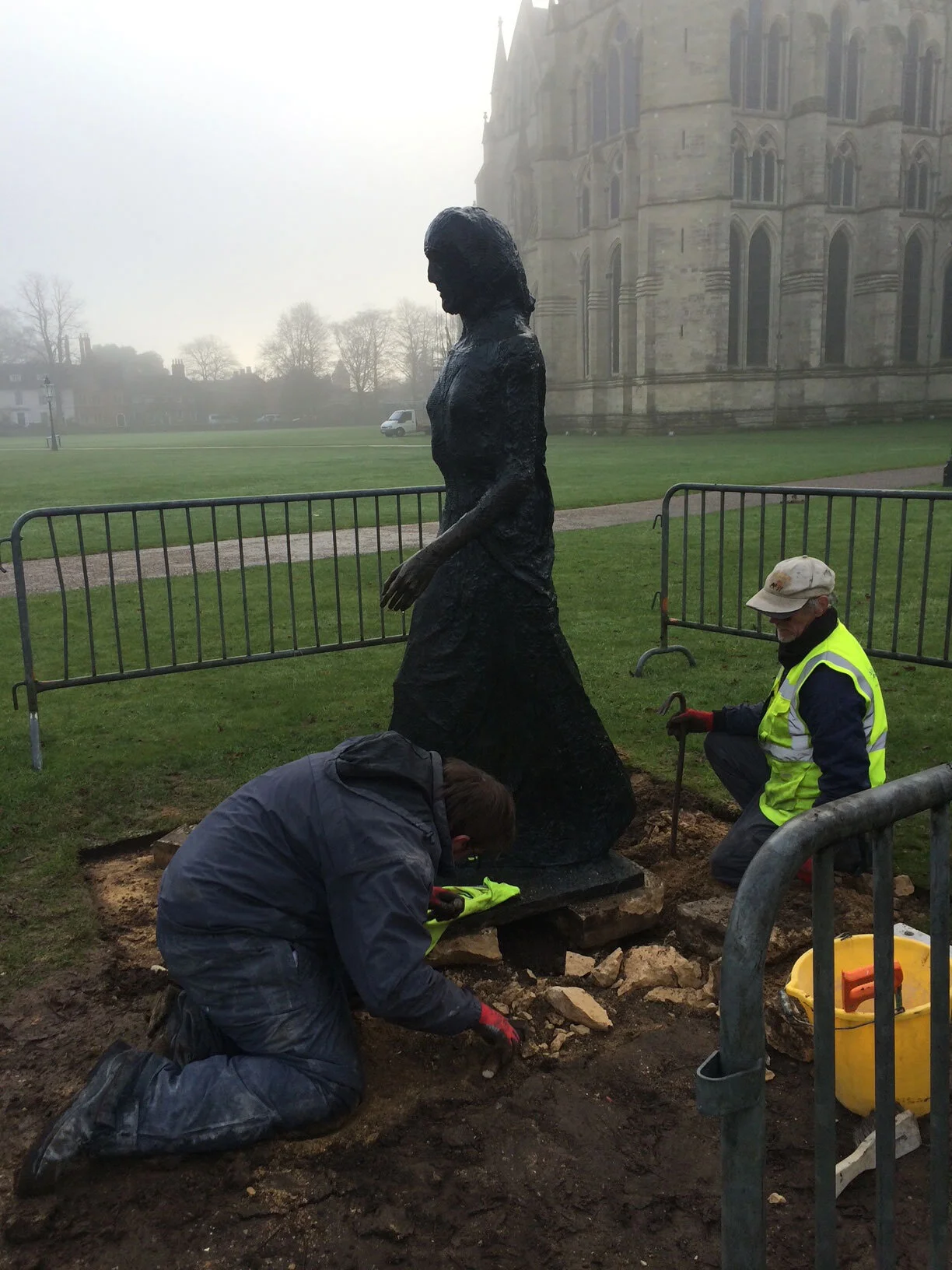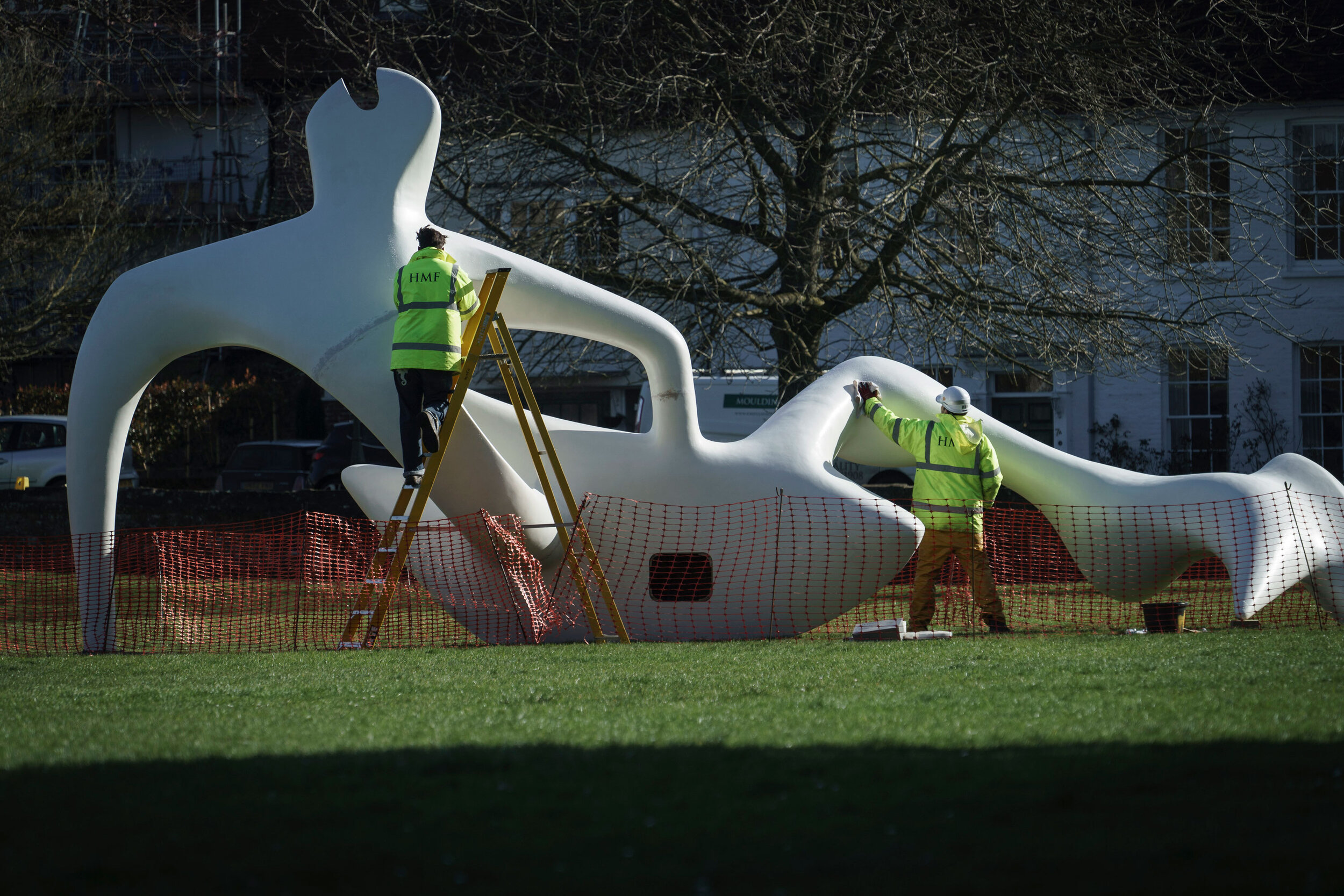
Image/video: Take Down of Large Reclining Figure by Henry Moore. Installation team Mtec, Henry Moore Foundation and Salisbury Cathedral works department.
Installation of work in unique environments
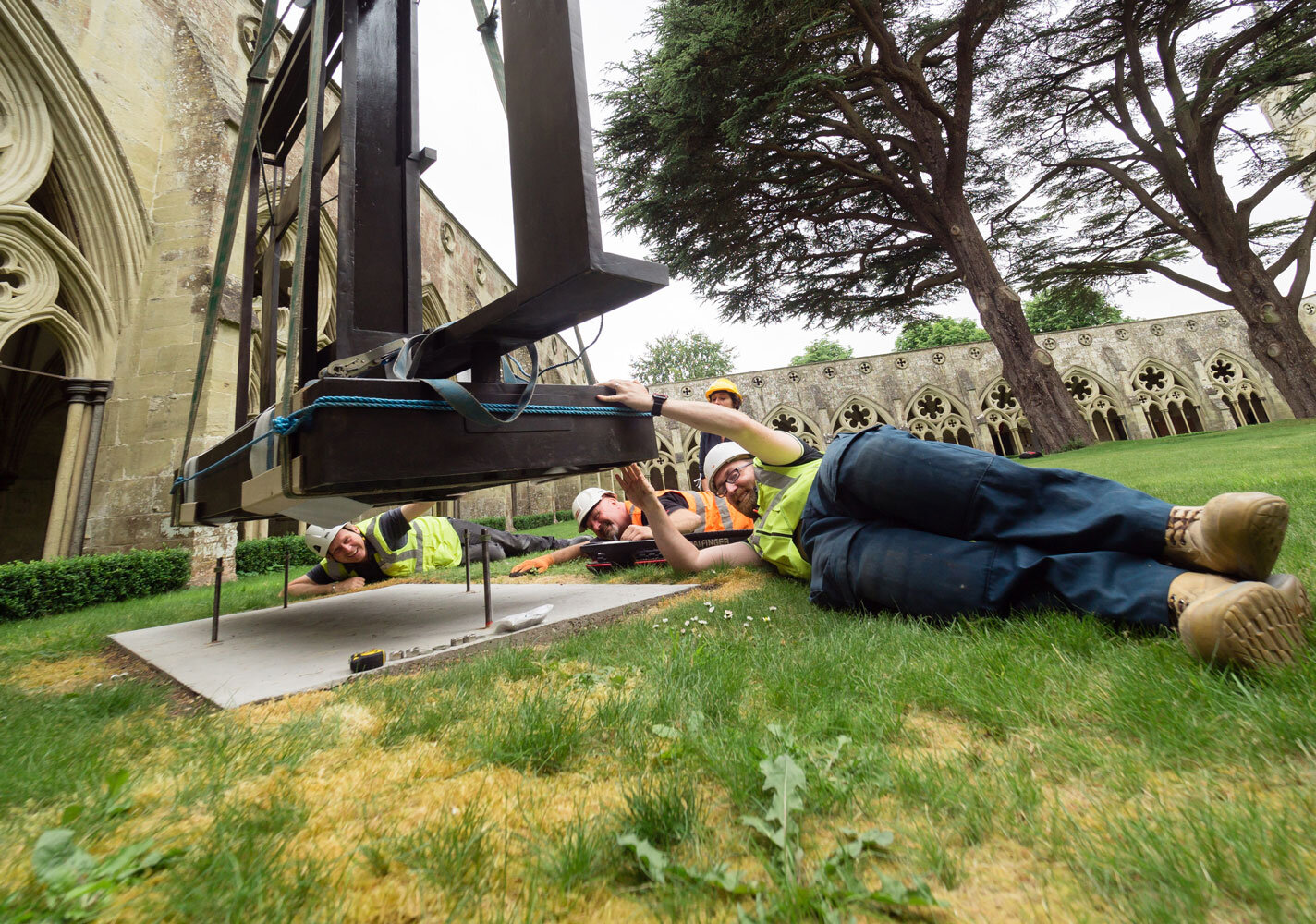
INSTALLATION CHALLENGES
“Delivery logistics and installation of all the exhibitions is demanding on many levels and on each occasion represents a unique challenge. At an early stage in the planning process I have to be sensitive to the architectural and historic limitations of the buildings, and implementation requires painstaking attention to detail with no room for error.”
In historical, spiritual and heritage sites we have to be highly sensitive to the structure and fabric of the buildings. All aspects have to be carefully considered and workarounds found, for example to avoid drilling holes in the walls. Structural loading requirements also have to be carefully calculated.
In order to deliver each exhibition on time and in budget I need to work closely with the Clerks of Works at the cathedral, as well as transport and installation teams, to ensure that the setting and installation of every piece is carefully planned and precisely executed. We frequently use specialist equipment such as cranes, gantries, scissor-lifts and HIABs, and we always use professional engineers and installers to ensure high standards throughout the process.

Permanent Collection - Construction (Crucifixion) by Barbara Hepworth. Bronze with coloured panels, 390 x 470 x 29 cm. Gifted to the cathedral in 1976. Sited in the Cloister Garth. Installation by J A Mackenzie and Salisbury Cathedral works department
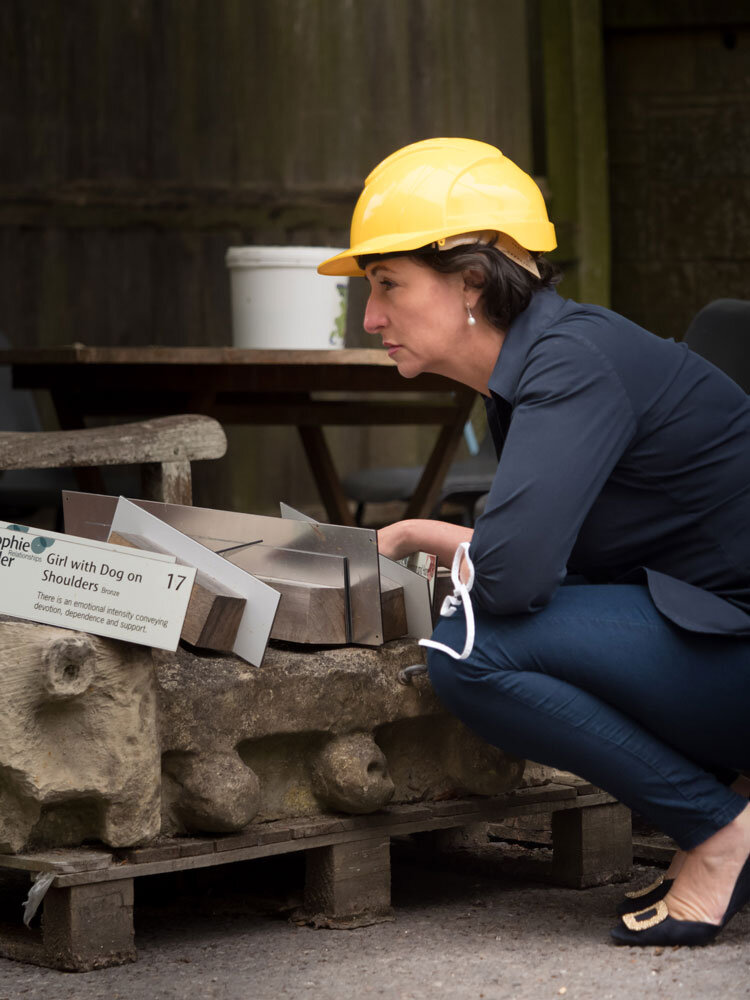
Curator inspecting
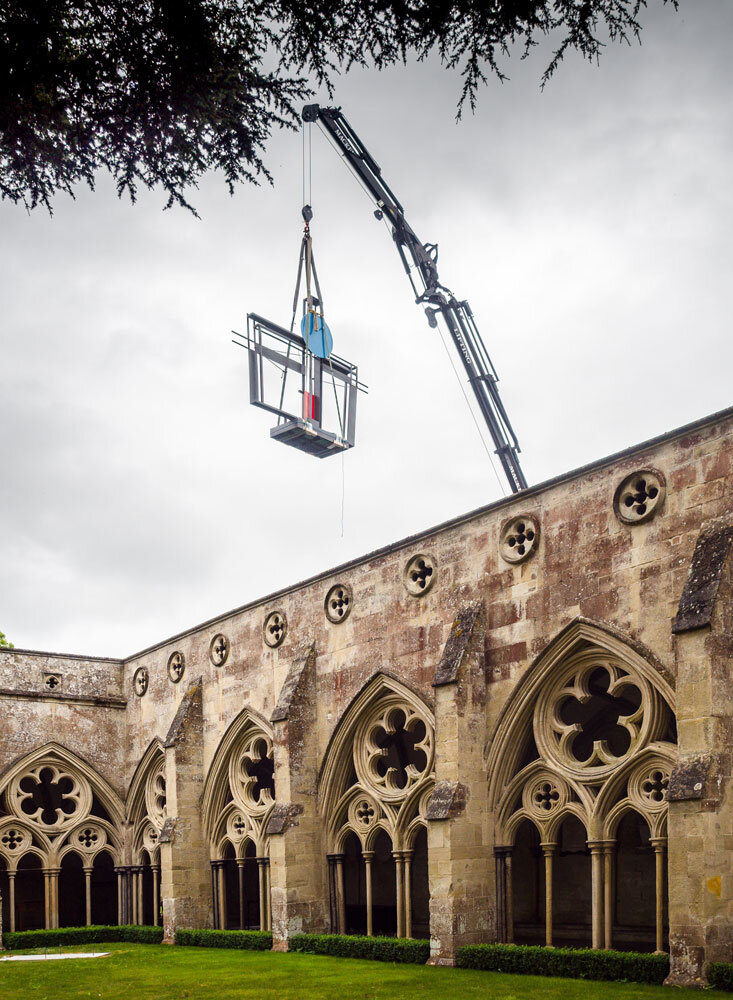
Construction (Crucifixion) by Barbara Hepworth.

Construction (Crucifixion) by Barbara Hepworth.
Construction (Crucifixion) by Dame Barbara Hepworth
Salisbury Cathedral acquired Crucifixion in 1969 as a result of a friendship between Hepworth and the then Canon Chancellor, Canon Moelwyn Marchant. It now forms part of the cathedral's permanent collection of works of art.
The sculpture was loaned to Portsmouth Cathedral from 1988 to 1997 and then to Winchester Cathedral from 1997 to 2017. I helped to organise its permanent return. In July 2017 the newly conserved sculpture returned to Salisbury and is now sited in the south-east corner of the Cloister Garth. Crucifixion measures 3.6m high and 4.6m across and weighs more than two tons. It was craned into place over the Cloister roof as it was too large to be brought through the main door.
The new location of Crucifixion in the Cloister Garth sets it in a place of calm and contemplation, where its theme of death and resurrection is given a particular context in what is also an historic burial ground.
Construction (Crucifixion) by Barbara Hepworth.

Permanent Collection - Walking Madonna, 1981 by Elisabeth Frink. Cast Bronze, life size, acquired by the cathedral in 1981 on 6 cement slabs.
Walking Madonna by Elisabeth Frink. Removing of cement slabs all works and installation by Salisbury cathedral works department.
Re-presenting Elisabeth Frink’s Walking Madonna
In 2016 I was asked to rethink the presentation of the iconic Walking Madonna sculpture, gifted by Frink to Salisbury Cathedral in 1981. The sculpture is sited on the north-east walk lawn, striding purposefully towards the city of Salisbury.
The sculpture had been positioned on 6 concrete slabs that were in disrepair, with the surrounding grass verge worn away by the thousands of visitors that engage with her every year.
Walking Madonna, 1981 (Detail)
The arts advisory committee commissioned the stone-masons yard at the cathedral to create a circular stone plinth to which the sculpture would be bolted. With the sculpture in temporary storage I selected with guidance from the Clerk of works, Forest of Dean ‘mixed colour’ sandstone for a new base. The circle is 1.6 meters in diameter, made up of 6 sections. We added subtle uplighters which were fixed into the stone, so the figure is now illuminated at night.
The bronze Walking Madonna sculpture was carefully removed from its original base using appropriate lifting equipment and transported to works Dept inside workshops for temporary storage, while the new base was fabricated.

Walking Madonna on New Forest of Dean sandstone circular plinth, cut by Salisbury Cathedral stone Masons
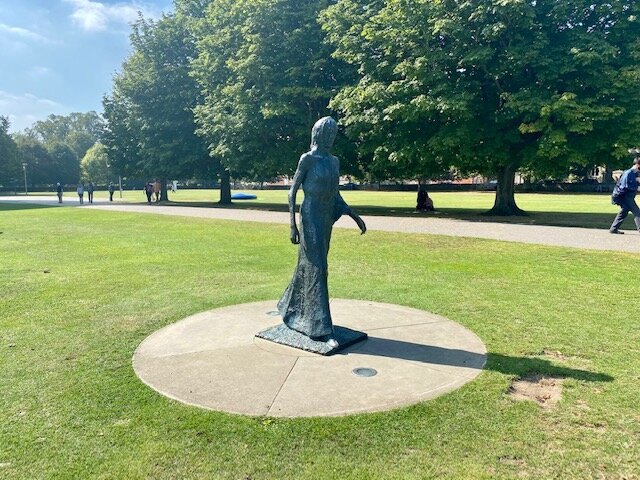
Walking Madonna with up lighting set into stone plinth
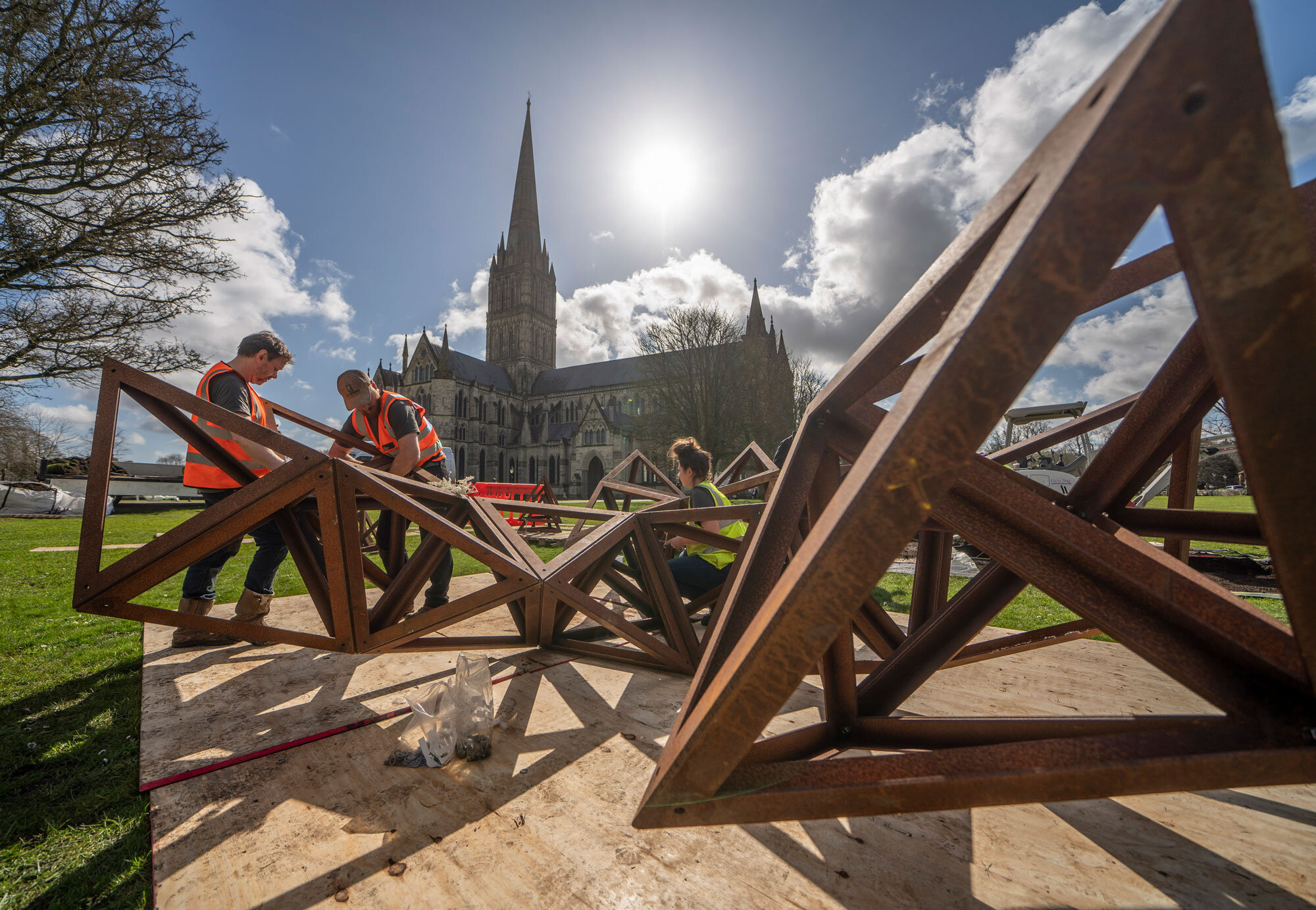
Spirit & Endeavour 800th Anniversary Exhibition
“Installing the Spirit & Endeavour exhibition in March 2020 was the greatest challenge of my career. My colleagues and I began a race against time before the first lockdown to complete the most challenging and complex installation of 20 works of art, all carefully sited within the Cathedral and the Close precinct. Some were monumental such as the 9 metre Henry Moore Reclining Figure and some presented unique challenges such as Antony Gormley's Grip (net) which was raised into a position in the Scissor Arch, no less than 14 metres from the floor of the cathedral.”
To install the monumental sculptures in the grounds of the Close, 15 tons of soil were extracted, sieved and replaced for siting the works, all under the watchful eye of our Cathedral Archaeologist. Specialist equipment was needed for every move including a 50 ton crane, three HIAB cranes , a 14 meter scissor lift and more than 400 hours of commitment from engineers and professional installers, all to bring three years of preparation together in just over three weeks, all the time allowed to install the entire exhibition.
The Works Department alone devoted hundreds of hours working with the installers to complete the project on time, all under the looming cloud of the imminent global pandemic. Their incredible efforts are a testament to the twin themes of spirit and endeavour which define this exhibition.

Stairway by Danny Lane. Sited in Salisbury Cathedral Close. Installation team J A Mackenzie and Danny Lane Studio
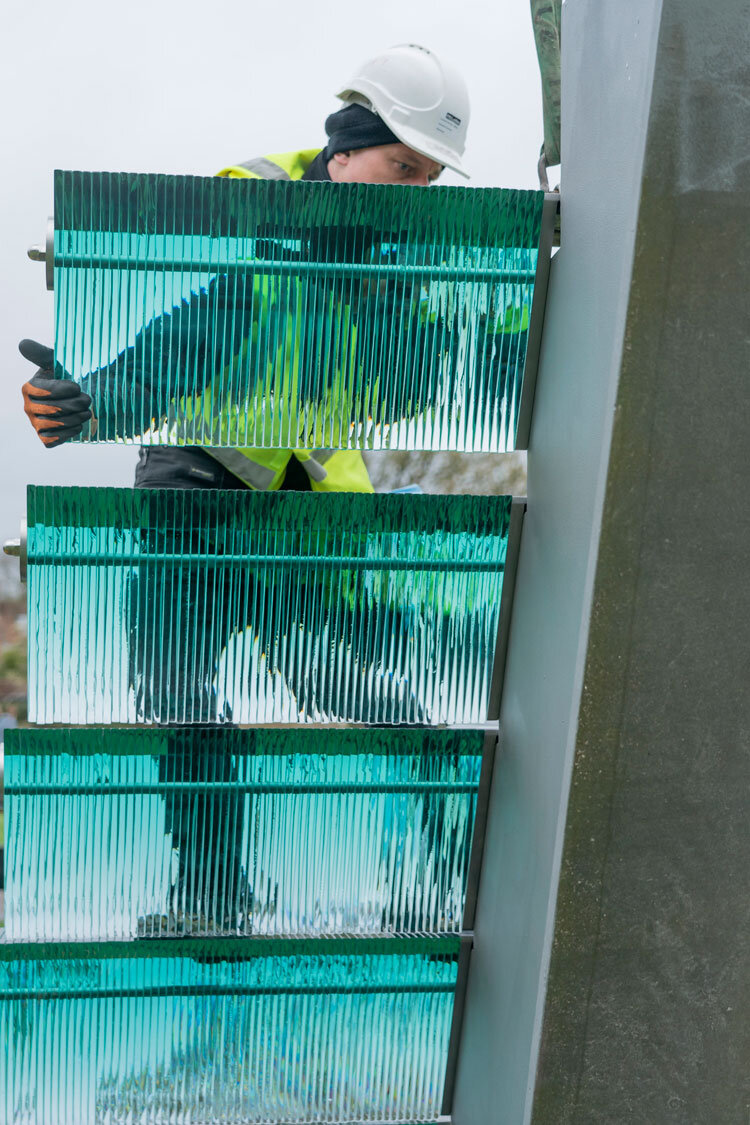
Stairway by Danny Lane. Sited in Salisbury Cathedral Close. Installation team J A Mackenzie and Danny Lane Studio

Large Recling Figure by Henry Moore. Sited in Salisbury Cathedral Close. Installation teams Mtec and the Henry Moore Foundation.
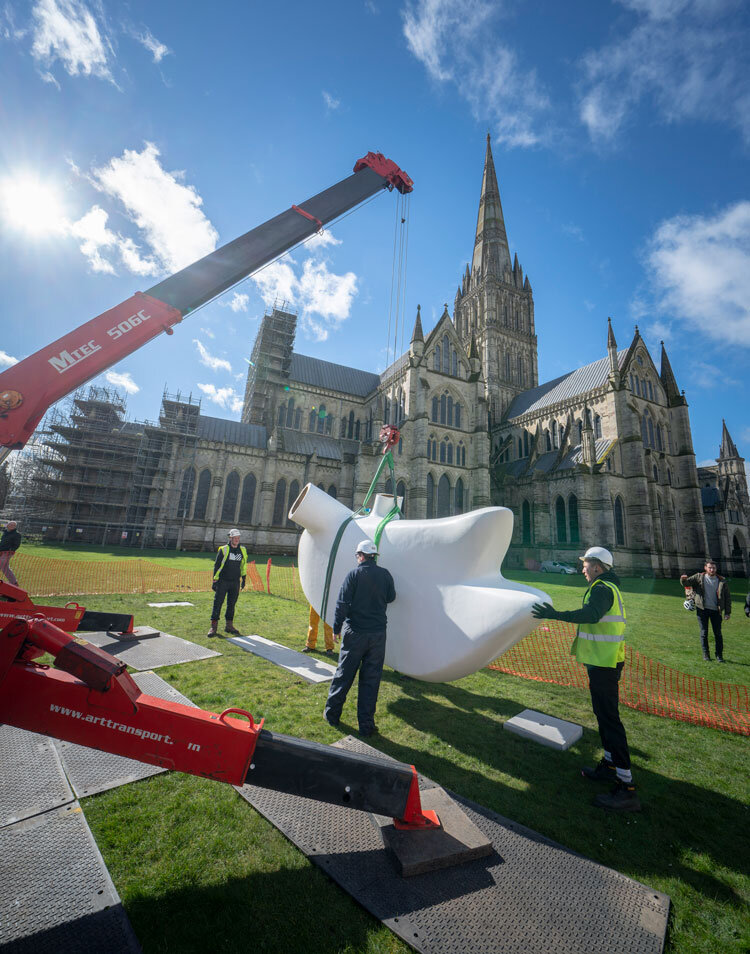
Large Recling Figure by Henry Moore. Sited in Salisbury Cathedral Close. Installation teams Mtec and the Henry Moore Foundation.
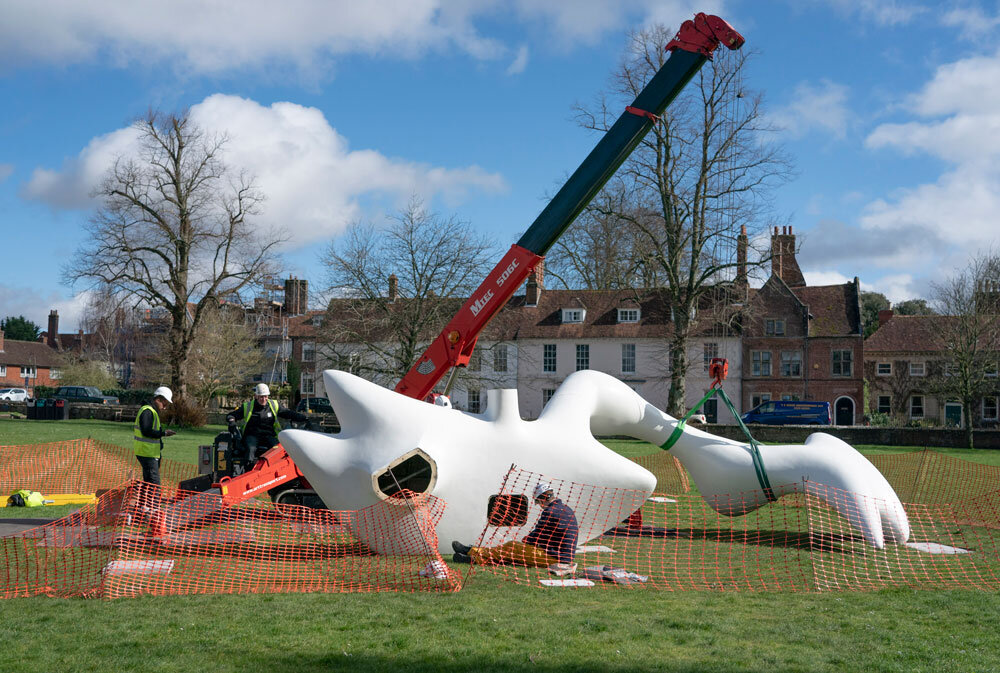
Large Recling Figure by Henry Moore. Sited in Salisbury Cathedral Close. Installation teams Mtec and the Henry Moore Foundation.
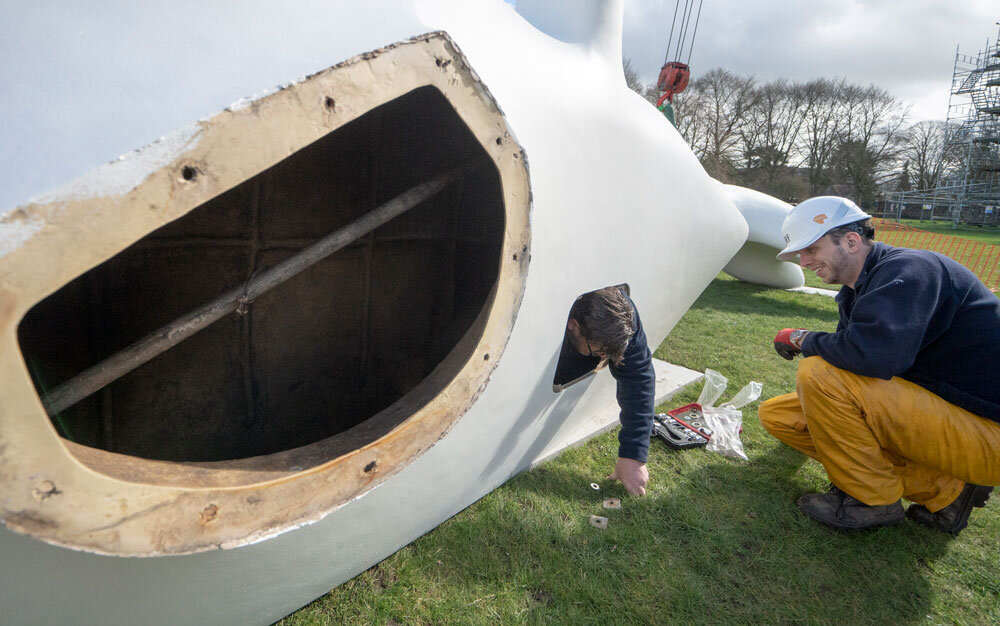
Large Recling Figure by Henry Moore. Sited in Salisbury Cathedral Close. Installation teams Mtec and the Henry Moore Foundation.

Formation I by Conrad Shawcross. Sited in Salisbury Cathedral Close. Installation team Whitewall, J A Mackenzie and Hewlett Turfing
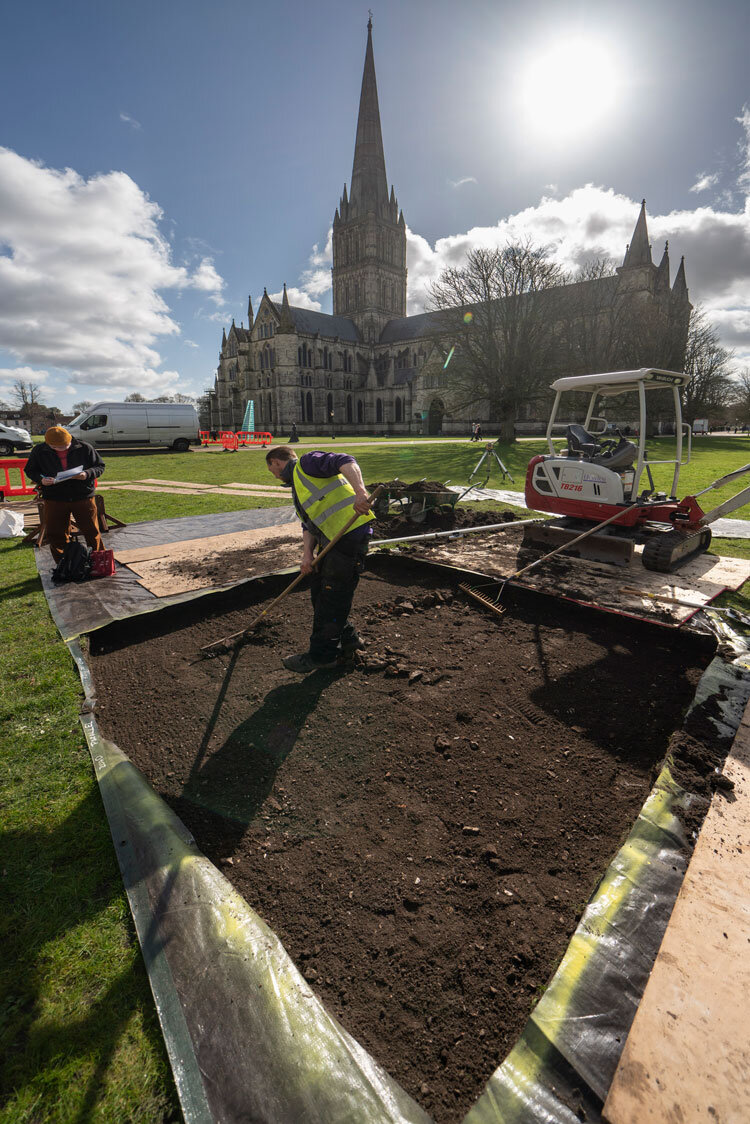
Formation I by Conrad Shawcross. Sited in Salisbury Cathedral Close. Installation team Whitewall, J A Mackenzie and Hewlett Turfing
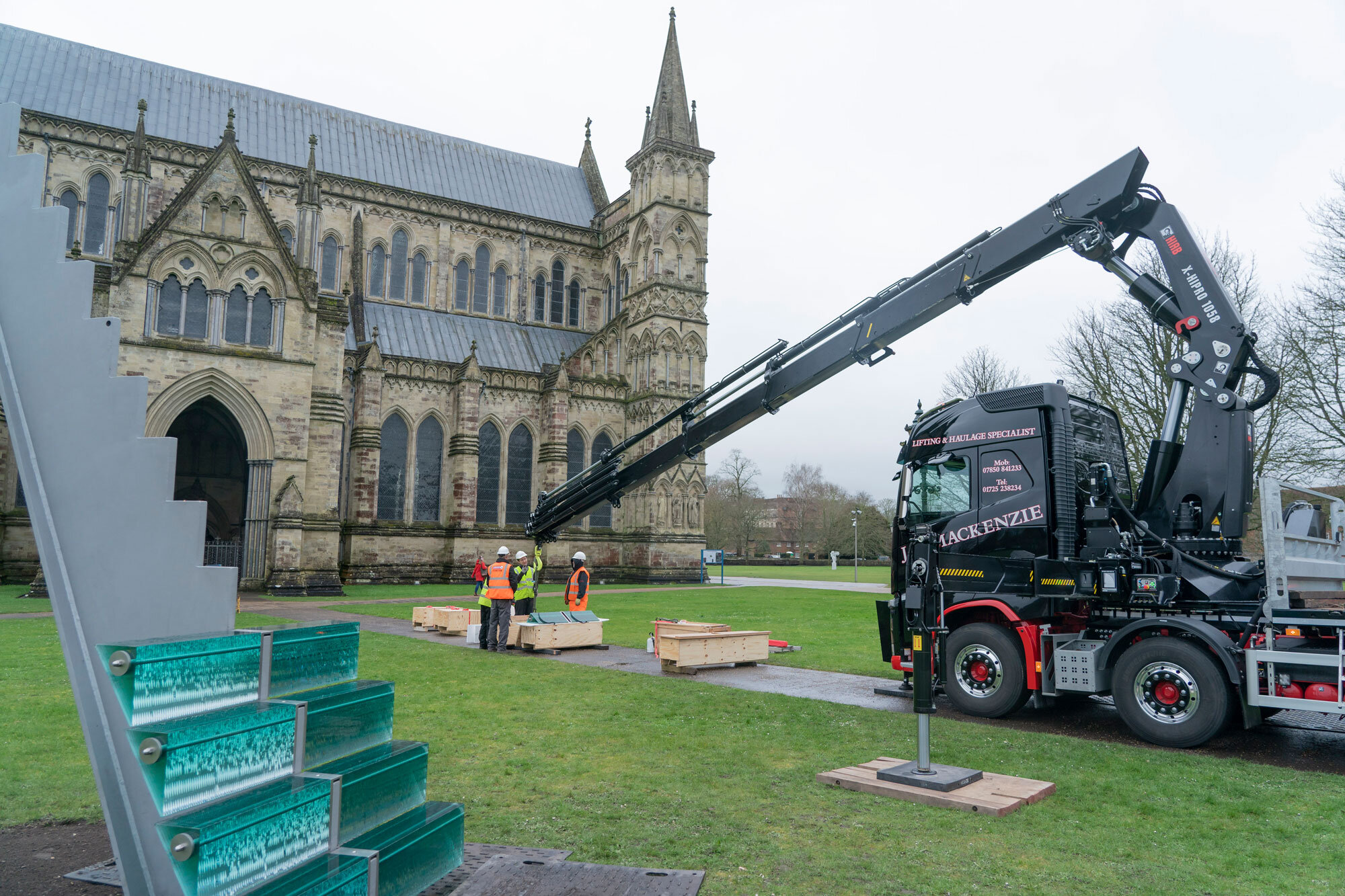
Stairway by Danny Lane. Sited in Salisbury Cathedral Close. Installation team J A Mackenzie and Danny Lane Studio

Formation I by Conrad Shawcross. Sited in Salisbury Cathedral Close. Installation team Whitewall, J A Mackenzie and Hewlett Turfing

Sail by Tony Cragg. Sited in the Cloister. Install by Mtec and Lisson Gallery

When Soak Becomes Spill. Sited on Choristers Green Salisbury Cathedral. Install team, J A Mackenzie, Salisbury Cathedral works department and Hauser&Wirth gallery

When Soak Becomes Spill. Sited on Choristers Green Salisbury Cathedral. Install team, J A Mackenzie, Salisbury Cathedral works department and Hauser&Wirth gallery

When Soak Becomes Spill. Sited on Choristers Green Salisbury Cathedral. Install team, J A Mackenzie, Salisbury Cathedral works department and Hauser&Wirth gallery

Detail of When Soak Becomes Spill. Sited on Choristers Green Salisbury Cathedral. Install team, J A Mackenzie, Salisbury Cathedral works department and Hauser&Wirth gallery
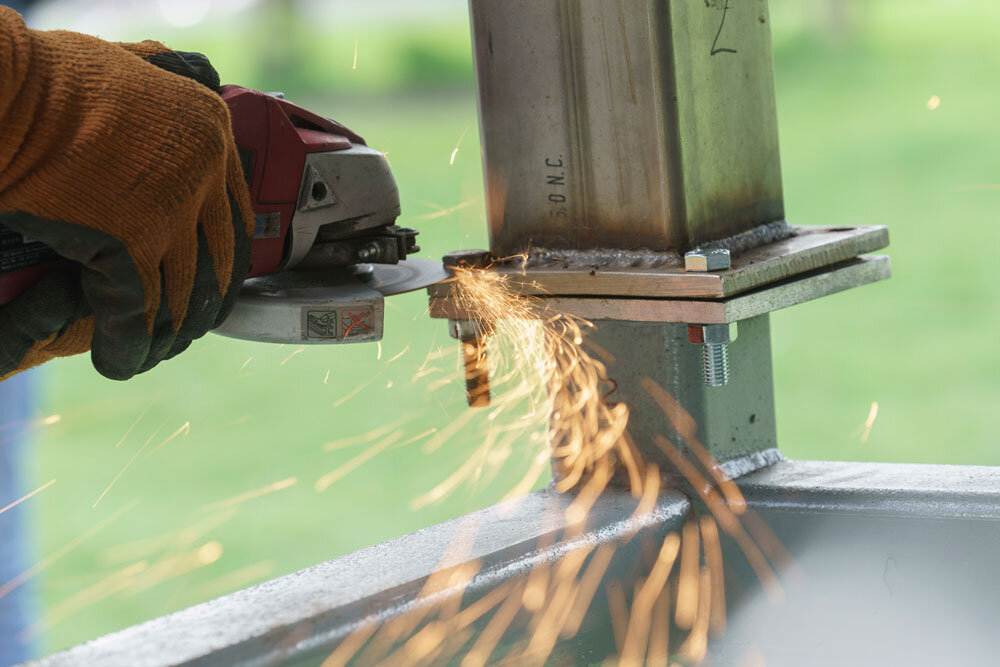
Detail of When Soak Becomes Spill. Sited on Choristers Green Salisbury Cathedral. Install team, J A Mackenzie, Salisbury Cathedral works department and Hauser&Wirth gallery

Cloaked Figure IX, 1978 by Lynn Chadwick sited in Salisbury Cathedral Close. Courtesy of Osborne Samuel.
Robert Titley, Canon Treasurer and Chair of Salisbury Cathedral Arts Advisory Committee wrote:
“The partnership with Osborne Samuel Gallery has been a fruitful one for Salisbury Cathedral over the years, allowing us to show remarkable sculpture. Walking Woman is a sculpture of great power. Like Frink’s Madonna, this is not a passive sculpture. As she moves purposefully towards the Cathedral, her cloak flying out behind her, she draws us in as we ourselves approach the Cathedral and invites us to walk with a purpose too.”
Lynn Chadwick
(1914- 2003)
Cloaked Figure IX and Walking Woman (Courtesy of Osborne Samuel Gallery)
On the 11 August 2014 to mark the centenary of Lynn Chadwick’s birth Cloaked Figure IX was installed on the north-west lawn at Salisbury Cathedral on a long term loan by Osborne Samuel Gallery. This over life size bronze figure was welcomed as a new member of Salisbury Cathedral's pioneering rolling arts programme, the distinctive sculpture was used as a focus for community engagement. It formed part of the Magna Carta celebrations in 2015 and appeared in the NY Times.
Walking Woman, 1984 by Lynn Chadwick. Sited in Salisbury Cathedral Close. Courtesy of Osborne Samuel.
I wrote at the time, “Cloaked Figure IX 1978, regarded by the artist as a seminal work, has enormous presence. She evokes images of cardinals and other ecclesiastic figures as she makes her way majestically toward the West Doors of the Cathedral. It is an implied movement, her enveloping, protective cloak swept behind with her pyramidal head held high, surveying her new surroundings.”
The monumental Walking Woman 1984 loan was also arranged by Osborne Samuel Gallery. The figure was installed on September 5th 2016, positioned on the same site as Cloaked Figure 1978, which is now permanently sited at the entrance to the Montreal Fine Arts Museum.
“Lynn Chadwick is recognised internationally as one of the 20th century’s most important artistic figures. Over 50 years he created a large number of standing and walking figures, instantly recognisable from his iconic use of triangular and square heads to denote female and male figures. This monumental walking woman is one of the great achievements of his career, a strong, confident figure, her immense cloak billowing behind her as she confidently faces toward the Cathedral.”
Peter Osborne, Osborne Samuel Gallery

Walking Woman by Lynn Chadwick. Sited in Salisbury Cathedral Close. Installation team J A Mackenzie and Osborne Samuel Gallery

Walking Woman by Lynn Chadwick. Sited in Salisbury Cathedral Close. Installation team J A Mackenzie and Osborne Samuel Gallery
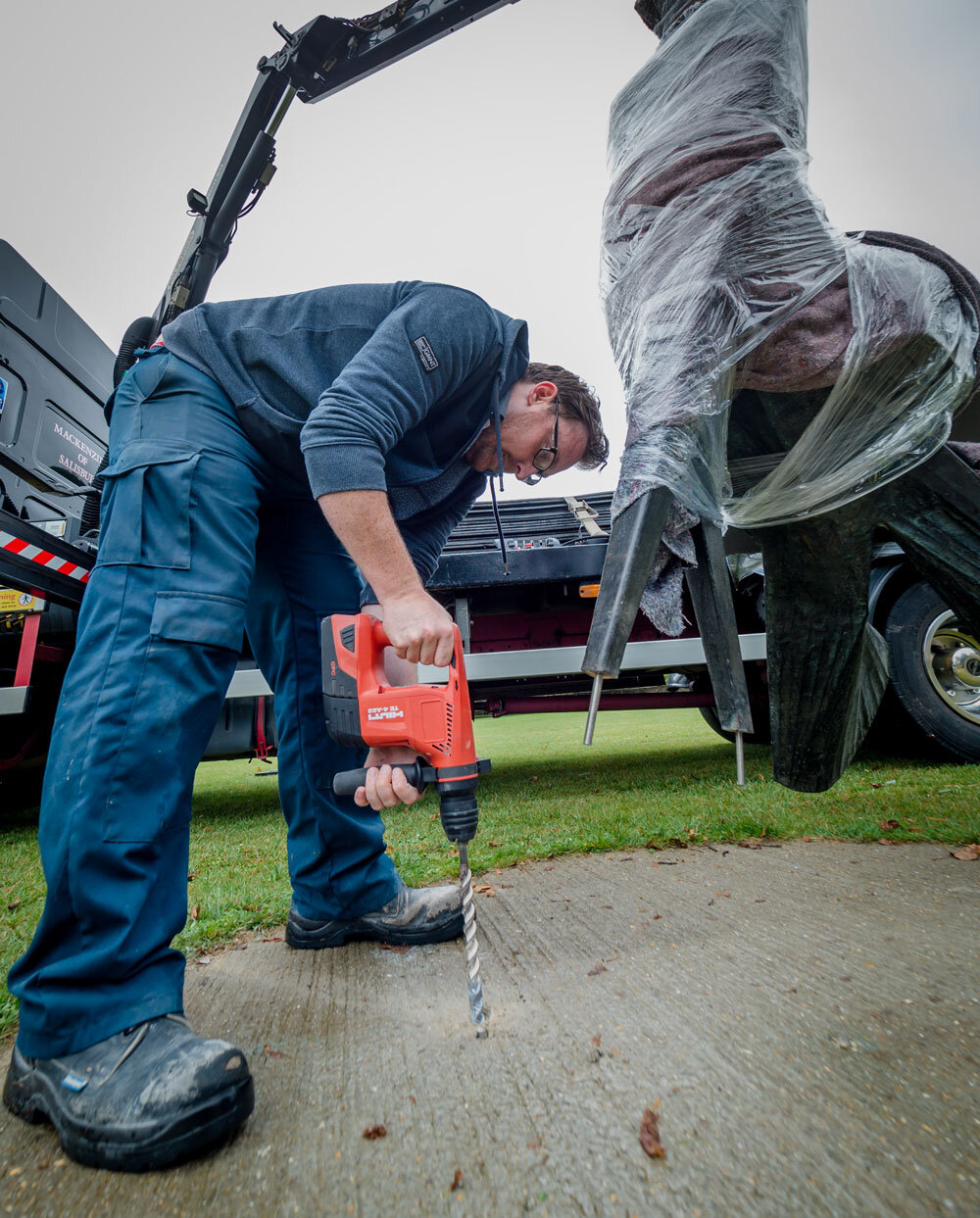
Walking Woman by Lynn Chadwick. Sited in Salisbury Cathedral Close. Installation team J A Mackenzie and Osborne Samuel Gallery

Cloaked Figure by Lynn Chadwick sited in Salisbury Cathedral Close. Installation team J A Mackenzie and Osborne Samuel Gallery
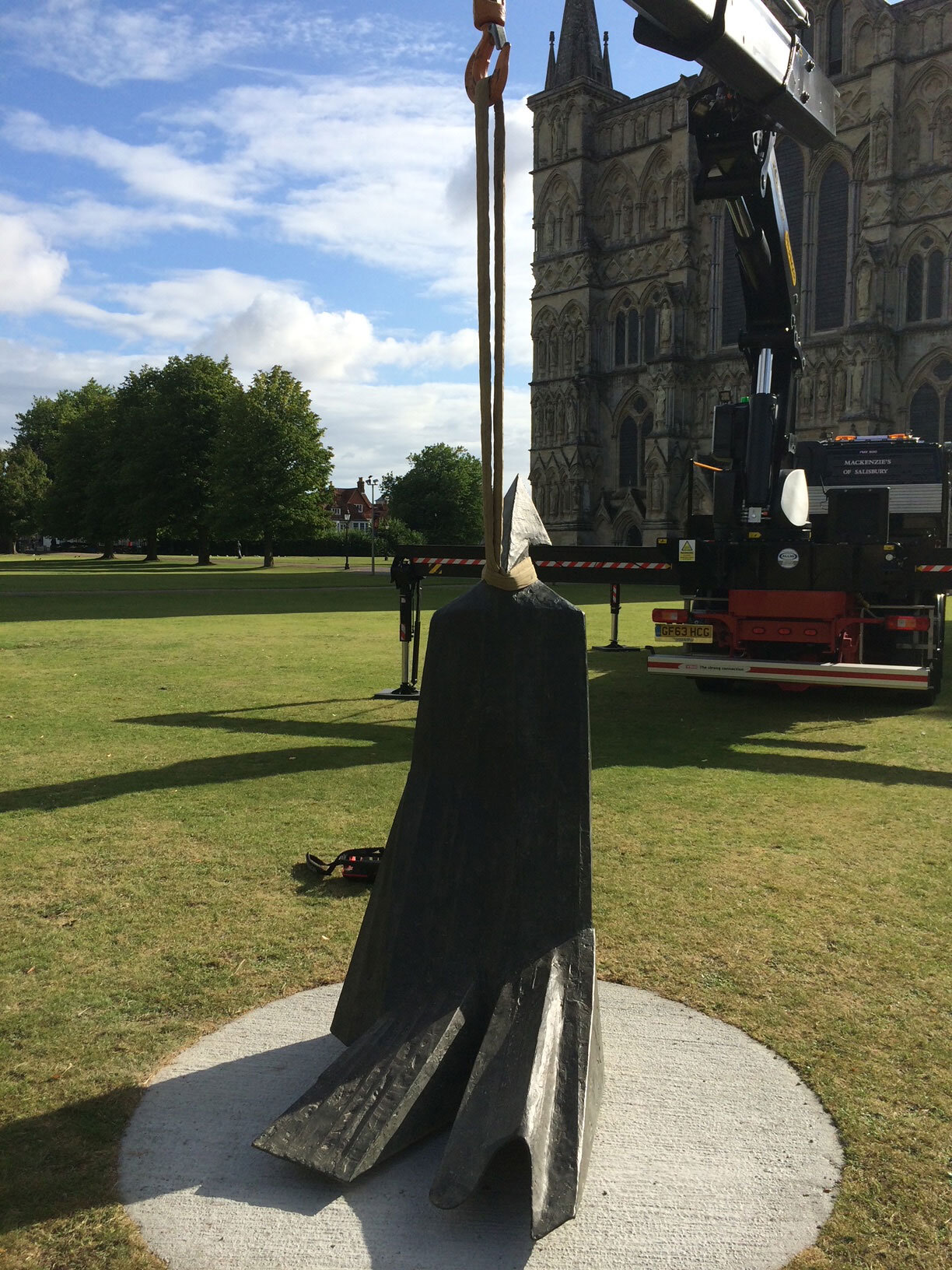
Cloaked Figure by Lynn Chadwick sited in Salisbury Cathedral Close. Installation team J A Mackenzie and Osborne Samuel Gallery

Walking Woman by Lynn Chadwick. Sited in Salisbury Cathedral Close. Installation team J A Mackenzie and Osborne Samuel Gallery
Angels Harmony 2006 by Helaine Blumenfeld
In 2013 Salisbury Cathedral in collaboration with Bowman Sculpture, hosted a large retrospective of Helaine Blumenfeld’s sculptures. A hardback catalogue was produced with essays by Richard Cork, ‘The Restorative Power of Art’ and Nicola Upson, ‘ Messenger of the Spirit’ which was also the title of the exhibition.
In 2014 Helaine gifted Angels Harmony to Salisbury Cathedral, this magnificent statuary marble sculpture has graced Choristors Green, featured in the ‘Tree of Life’ exhibition at Ely Cathedral and is now sited on a plinth on the north-west lawn.
The sculpture shows two angels, each with only one wing, seemingly ripped apart, exploring the interplay between intimacy and independence. The space between the two angels resonates, as alone each angel seems fragile and earthbound. Together they soar.
“Every one of us is an angel with only one wing. To fly we must embrace one another.”
Helaine Blumenfeld
Permanent Collection - Angels Harmony, 2011 by Helaine Blumenfeld. Marble. 17.3 x 99 x 25 cm. Courtesy of the artist and Salisbury Cathedral. Moved from Choristers Green to Salisbury Cathedral Close. Installation team J A Mackenzie and Salisbury Cathedral works department.
All images by Ash Mills




